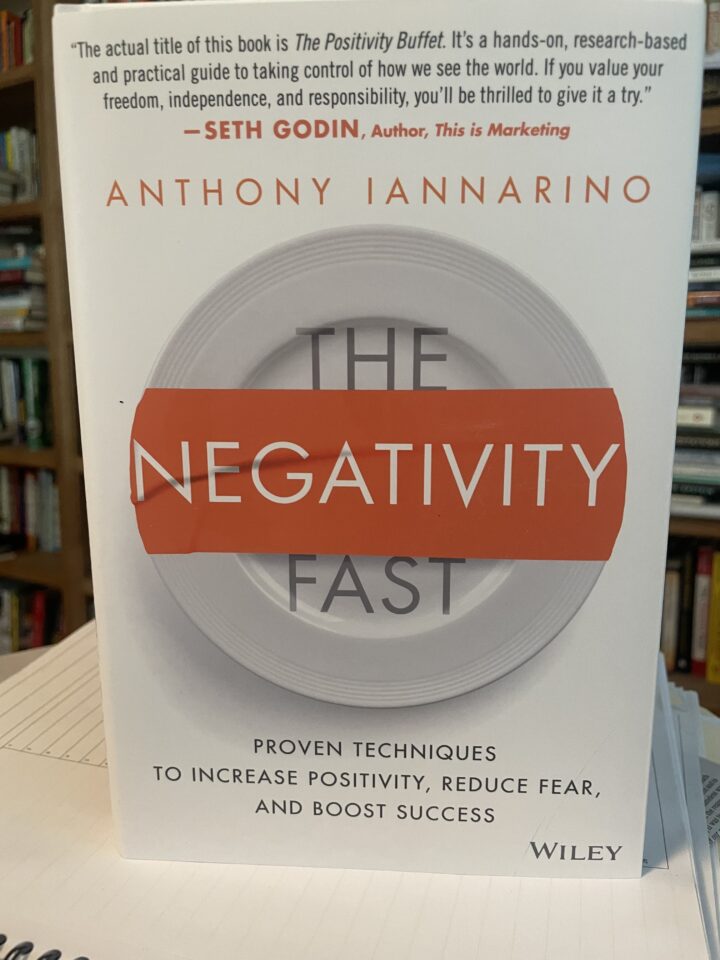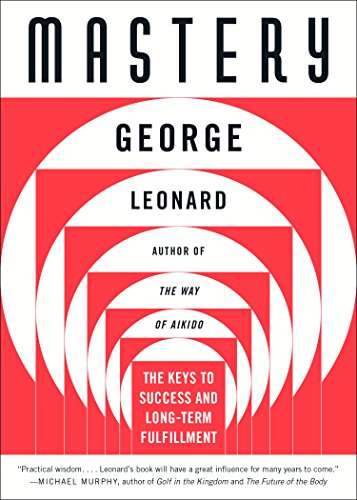You probably won’t read this entire post word for word. As a typical busy reader, you’ll skim it, or your mind will wander part-way through. That means you will probably miss out on at least part of my message, and my writing will not be as effective as it could be.
But that would be my fault, not yours. As a writer, it’s up to me to earn your full attention. If I want my writing to be effective, it’s up to me to make it worth your time, and to make it easy for you to read. I have to write for your wandering mind.
Studies show that minds wander about 1/3 of the time when reading. Once you accept this inconvenient fact, you will write to ensure that your message gets in, sticks, and generates a response. How? By following the principles described in the book, Writing for Busy Readers, by Harvard’s Todd Rogers and Jessica Lasky-Fink. They take a science-based approach to understand how busy readers engage with written information, to distill six simple but powerful principles for effective writing, three of which I cover below.[1]
Write for the wandering mind
Less is more. This bit of writing advice has been around so long that it has become a cliché. But the authors back it up with data. In one study, they sent 7,000 emails requesting the recipients to complete a short survey. One email was 127 words, the other 49. The concise version had almost double the compliance rate. Even more impressive is the study with a fundraising message. The initial wordy version was trimmed by arbitrarily deleting every other paragraph. Although readers found the concise version to be less coherent, it still raised 16% more money!
Words add up, and the potential reader may be deterred by the length of a message, and either not read it, or skip parts of it. One of the first things a reader notices about a message is its length, and they may skip or postpone those that seem like too large an expenditure of their time. To shorten your message you must consciously counteract the natural tendency when self-editing to add, rather than subtract, words.
Make reading easy. Admit it: have you ever pumped up your vocabulary to sound more intelligent? I have bad news: first, it doesn’t work. Second, it makes it less likely that readers will not only find it harder to understand, but it may deter them from even reading the whole thing. Some data again: simpler blogs get more likes and comments; tweets using shorter words get 75% more retweets.
The authors advise us: “If you take nothing else away from this book, we hope you’ll at least remember to ask yourself, ‘How can I make this easier for the reader?’ every time you write.” How? Use shorter words, and shorter and more direct sentences.
Tell readers why they should care. In my opinion this should be the first and most important principle. Readers will put up with a lot if they care about the value in the message, and will ignore the best-written material that does not seem relevant.
To ensure relevance, start by taking the reader’s perspective on the issue, or as I call it, outside-in thinking. Then, take care to see that every word addresses the principal question on the reader’s mind: “So What?” Third, emphasize which readers should care; personalize it as much as possible.
Who will get value from this book?
If you want to write more effective emails or social media messages to large groups, this book is perfect for you. Its major shortcoming, in my view, is that it is not tailored enough to a lot of the writing that businesspeople do: personalized messages to individuals or small groups, such as coworkers, customers, etc. For help in this area, I recommend Writing Without Bullshit by Josh Bernoff, and of course, Lean Communication by yours truly.
This is not a book about beautiful writing; it’s about effective writing. Above all, effective writing is useful, and it’s kind to the reader—because it lowers their stress by making it easy for them to understand and to act on. That also makes it useful to you as the writer, by increasing the chances that people will pay attention and agree to your requests.
If you’ve made it this far, I trust this post has been useful and kind. And effective.
[1] I chose these three because I feel they are the most important and deal more directly with your content. The fact that they track closely with my Lean Communication principles may just be a coincidence.
If you want to learn how to banish negativity from your life, there are two approaches you can take:
You can buy and study books on positive psychology, stoicism, mindfulness, and various related topics. You can read motivational books by Covey, Taleb, Holiday, and others. You can digest scientific papers on stress, post-traumatic growth, empathy and gratitude, sleep, diet and exercise.
Or you can simply read this excellent and engaging book by Anthony Iannarino. He has done all the reading, applied the lessons, and added his own compelling life experiences to produce what I consider to be an encyclopedia of positivity.
There is something in The Negativity Fast for everyone. Just like an encyclopedia, you don’t need to read every single chapter; you can sample those that better fit your current circumstances or personal preferences. For me, the chapters on changing your beliefs, reframing negative events, and focusing on helping others, particularly resonated. Others may benefit from suggestions on how to live with political divisiveness or practice mindfulness.
I consider myself a positive person, and I’ve read extensively in the literature, but I learned (or was reminded of) far more than I expected. Read it for yourself, or give a copy to someone who needs it, and I’m positive you will be pleased.
In my previous post, I made two principal points. First, you can’t change someone’s mind about a deeply held belief; only they can change their own mind. Second, the default approach most of us use to make that happen is argument based on facts and logic, but that is not only ineffective, but often backfires, which is why you can’t push a porcupine.
But don’t despair; even the most recalcitrant rodent can be motivated to move themselves, if you follow the right approach. While there is no foolproof way to get someone to change their mind, there are some well-tested techniques that can be surprisingly effective, and detailed in a book that I highly recommend: How Minds Change, by David McRaney.
I’ll briefly describe three methods outlined in the book, and then unpack some common elements they have that you may find useful in your persuasion efforts.
Deep Canvassing
Developed and refined over ten years and 15,000 conversations by a California group called Leadership LAB, deep canvassing is a conversational method that has produced surprising results in getting people to soften or even change their stance on a hot-button issues such as same-sex marriage, in as little as ten minutes.[1]
The conversation as applied to same-sex marriage would begin by asking for the person’s stance on the issue, and how strongly they feel about that stance. Next, you would tell a story, whether your own or someone else’s, of a gay person’s experiences with discrimination. At this point, ask them if they have modified their stance. Then, ask them if they or someone they know has experienced a similar story. After they’ve told their story, ask them again if their position has moved. All this time, you listen respectfully and non-judgmentally, and never try to argue. A surprising amount of times, the other person will themselves offer that they have softened their stance, or even changed their minds entirely.
Smart Politics
A method developed by psychiatrist and social scientist Karin Tamerius which adapts ideas from therapists who work with alcoholics and addicts. Her model uses a change conversation pyramid, in which you work your way up to change at the top. Most people who want someone to change go straight for the top, but Tamerius says we have to attend to all the other needs which must be met before change is possible. For people to even contemplate change, they must be in a learning frame of mind, and that won’t happen unless they feel safe. In ascending order, these needs are comfort, compassion, comprehension, compassion and finally change.
Street Epistemology
Epistemology is the study of how we know things, and philosophers can write hundreds of pages about it in ways that leave you knowing less than when you started.
In simpler terms, McRaney says, “In the end, epistemology is about translating evidence into confidence.” One of the most important steps in mind change is introducing uncertainty or ambiguity about one’s own position. Street epistemology is a technique that uses questions to get people to walk through their own thinking and perhaps discover gaps or errors that moderate their initial confidence as a result.
What are the elements that help minds to change?
You can find the complete set of steps for each of these methods outlined in the book if you are curious, (or check out some excellent examples on YouTube) but if you’re not planning on going door to door to change the minds of voters there are a few key insights you can apply to any of your persuasion efforts.
- First of all, avoid anything that will raise their defenses. Put the other person at ease by assuring them that you are not trying to sell them or change their mind. Ask permission to ask questions, so that you can better understand their point of view. The best way to prevent raising defenses is to avoid saying anything that will raise them, so don’t argue, contradict or give advice. In fact, it’s best to avoid talking about yourself or your opinion at all, except for possibly at the later stages of the conversation, and even then it can be risky.
- Develop rapport. Rapport lowers resistance, builds trust, and facilitates information exchange in both directions. Rapport is crucial in defusing the us versus them mentality. You can establish rapport simply by being friendly and genuinely curious to hear what they think. Smile, use their name, use open gestures. Repeat back in your own words what they tell you to clarify and verify that you heard it right.
- As you get into the substantive conversation, find out how strongly they hold their belief or opinion. For example, you could ask them to give you a score from one to ten to describe their level of certainty. If they say ten, ask them why someone else might have a lower number. If they give you a number less than ten, ask them why it’s not higher. This gets them to actively think of reasons against their position.
- Use questions to guide or nudge them into thinking about their own thinking behind their belief. This is called technique rebuttal, as opposed to topic rebuttal. Don’t question their conclusions; instead explore the methodology they used to reach those conclusions.
- Never be closing. In other words, listen respectfully and patiently, and then end the conversation without explicitly trying to change their minds. You can ask if their thinking has changed in any way, but avoid raising those defenses.
How Minds Change is deep, comprehensive and well-researched, with far more in it than I have covered in this brief recommendation. Whether you carefully study and practice any of the methods, or simply pick and choose ideas from each, you will be much better equipped to influence—if not change—the minds of others.
[1] McRaney claims 20 minutes, but this article about deep canvassing claims it can work in as little as 10.
Some books you just have to be ready to read. I first read George Leonard’s, book, Mastery: The Keys to Success and Long-Term Fulfillment thirty years ago, soon after it first came out. I found it useful, but it is only now that I chanced upon it on my bookshelves and re-read it, that it has deeply affected my thinking. I feel like I am ready because for the past ten months I have taken up the challenge of learning how to draw.
What about you? Have you ever had ambitions of mastering a skill or activity, only to abandon it soon after the initial enthusiasm? Or do you find yourself stuck in a rut, needing a new challenge to occupy your attention and fire your enthusiasm? I’ve been in both situations—repeatedly—and I know how difficult and rare it is to master a new skill, especially later in life.
If so, it helps to have a mentor to place you on the proper path and guide you along it. Leonard died in 2010, but his short and insightful book can provide the wisdom and instruction that can improve your chances of success.
The key insight, for me, is that mastery is not a goal. It is a never-ending path. Once you step on the path, you will never reach your destination, but you can go far. How far you go depends on what you do while on the path, and how long you stay on it.
Your progress will vary; you will probably make quick progress at first, and then you will inevitably hit a patch where you don’t see any improvement at all and may even regress. That’s when it’s so easy and common to get frustrated and quit, or impatiently double down on your efforts and possibly get even worse.
Many people never get past this first plateau, but those that stick with it are generally rewarded with another burst of improvement, and on it goes. Leonard’s key point is that the real improvements are actually occurring during these plateaus, as your brain and body gradually figure out how to turn the required behaviors into unconscious habits. The bursts of improvements are merely the markers of that progress.
You will spend most of your time on the path on one of these plateaus. Plateaus are good. Mastery, therefore, comes from embracing those plateaus. For me, this is the most important point: learn to love the practice for its own sake. Practice, according to Leonard, is not a verb but a noun: you have a practice—an approach or a process—that is worth following for its own sake. Masters love to practice.
This idea resonates with a concept I’ve written about before:
There are two general types of goals that people set for themselves, performance goals and learning goals. Performance goals are about reaching a set target, which is frequently related to how you compare to others. Learning goals focus on learning, getting better and comparing yourself to yourself.
The idea may seem to counter results-oriented business activities. But even in sales, one study has shown that salespeople who pursue learning goals outperform those who chase performance goals.
What is success? Is it the reaching of a difficult and meaningful goal, or the enjoyment and fulfillment that comes from being dedicated to the pursuit? The beauty of following Leonard’s advice is that you will not only enjoy the journey, but you will be more likely to reach a worthwhile destination.
As for drawing, I have no expectation of ever mastering the skill. But after ten months I am no longer terrible at it, and next month I’ll be better, and the month after that. Most importantly, I am so enjoying the effort—and that in itself means I’ve already succeeded. Mastery is not the destination, but the path.






